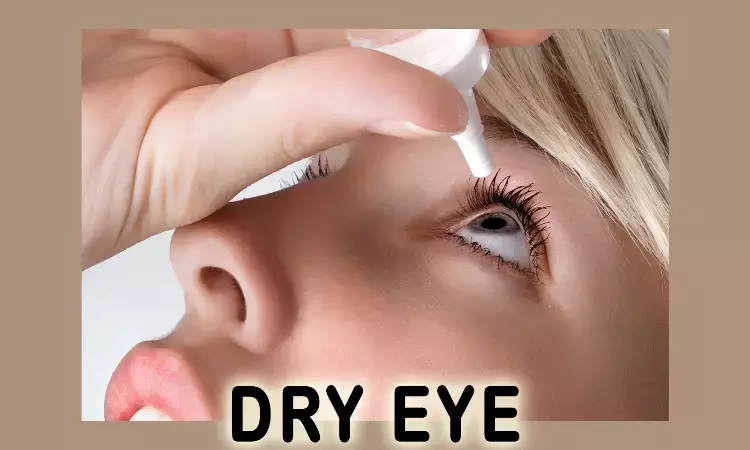- Home
- Medical news & Guidelines
- Anesthesiology
- Cardiology and CTVS
- Critical Care
- Dentistry
- Dermatology
- Diabetes and Endocrinology
- ENT
- Gastroenterology
- Medicine
- Nephrology
- Neurology
- Obstretics-Gynaecology
- Oncology
- Ophthalmology
- Orthopaedics
- Pediatrics-Neonatology
- Psychiatry
- Pulmonology
- Radiology
- Surgery
- Urology
- Laboratory Medicine
- Diet
- Nursing
- Paramedical
- Physiotherapy
- Health news
- Fact Check
- Bone Health Fact Check
- Brain Health Fact Check
- Cancer Related Fact Check
- Child Care Fact Check
- Dental and oral health fact check
- Diabetes and metabolic health fact check
- Diet and Nutrition Fact Check
- Eye and ENT Care Fact Check
- Fitness fact check
- Gut health fact check
- Heart health fact check
- Kidney health fact check
- Medical education fact check
- Men's health fact check
- Respiratory fact check
- Skin and hair care fact check
- Vaccine and Immunization fact check
- Women's health fact check
- AYUSH
- State News
- Andaman and Nicobar Islands
- Andhra Pradesh
- Arunachal Pradesh
- Assam
- Bihar
- Chandigarh
- Chattisgarh
- Dadra and Nagar Haveli
- Daman and Diu
- Delhi
- Goa
- Gujarat
- Haryana
- Himachal Pradesh
- Jammu & Kashmir
- Jharkhand
- Karnataka
- Kerala
- Ladakh
- Lakshadweep
- Madhya Pradesh
- Maharashtra
- Manipur
- Meghalaya
- Mizoram
- Nagaland
- Odisha
- Puducherry
- Punjab
- Rajasthan
- Sikkim
- Tamil Nadu
- Telangana
- Tripura
- Uttar Pradesh
- Uttrakhand
- West Bengal
- Medical Education
- Industry
Artificial tears help to keep tear film stable in patients undergoing treatment with Anti-VEGF Intravitreal Injections

Intravitreal injection of anti-vascular endothelial growth factor (anti-VEGF) agents is a commonly used treatment for various ophthalmic conditions. One of these includes age-related macular degeneration. These injections are used to prevent vision loss and this therapy requires patients to receive monthly injections for up to 2 years. It should be taken into consideration that identifying the specific role that intravitreal injections play in the development of dry eye syndrome is difficult, as the patient's age and other age-related diseases may also contribute. Despite this, it is important to be aware that these preexisting conditions make patients more vulnerable to developing dry eyes when having intravitreal injections. It is likely, then, that this treatment is a factor in the development of dry eye syndrome.
The main purpose of this study by Pastor-Pascual et al was to assess the use of artificial tears in patients submitted to intravitreal injections of anti-VEGF agents using both subjective and objective metrics.
Thirty-four eyes undergoing anti-VEGF treatment were analyzed. Each patient underwent a subjective and objective evaluation of the ocular surface, using the Ocular Surface Disease Index (OSDI), Dry Eye Questionnaire (DEQ)-5, tear meniscus height (TMH), first and average non-invasive Keratograph Break-Up Time (NIKBUT), bulbar conjunctival redness, meibography and the Vision Break-Up Time (VBUT). Patients attended 5 visits (days 0, 7, 30, 37, and 60). All patients continued with their intravitreal injection treatment during the study (days 0, 30, and 60). Patients did not receive any artificial tear treatment during the first month of the study, and at the baseline visit they were randomly assigned to one of two study groups to receive either the Systane Hydration or the Viscofresh 10mg/mL formulation. Patients were instructed to instill one drop of the assigned study treatment 3 times a day for 30 days during the second month of the study.
According to the Mixed Models for Repeated Measures analysis, there was not enough statistical evidence for any of the parameters examined to determine significant differences between being treated with artificial tears and not being treated (p > 0.05). There was, however, a tendency toward improved outcomes in some parameters when artificial tears were used. OSDI, DEQ-5, TMH, and meibography were not affected by either the type of artificial tear used or by the time (from day 30 to day 60; p > 0.05), but the NIKBUT and VBUT values increased over time during this period regardless of which treatment the patient was receiving.
"In conclusion, we consider that the use of intravitreal injections might affect the ocular surface, and we suggest that the use of artificial tears could help to keep the tear film stable, and therefore, lead to an improved quality of life for those patients receiving intravitreal injections. Future studies should be conducted with large samples, long follow-up periods, and considering more types of artificial tears available on the market to elucidate whether the tendency reported in our study becomes significant."
Source: Pastor-Pascual et al; Clinical Ophthalmology 2022:16
https://doi.org/10.2147/OPTH.S391082
Dr Ishan Kataria has done his MBBS from Medical College Bijapur and MS in Ophthalmology from Dr Vasant Rao Pawar Medical College, Nasik. Post completing MD, he pursuid Anterior Segment Fellowship from Sankara Eye Hospital and worked as a competent phaco and anterior segment consultant surgeon in a trust hospital in Bathinda for 2 years.He is currently pursuing Fellowship in Vitreo-Retina at Dr Sohan Singh Eye hospital Amritsar and is actively involved in various research activities under the guidance of the faculty.
Dr Kamal Kant Kohli-MBBS, DTCD- a chest specialist with more than 30 years of practice and a flair for writing clinical articles, Dr Kamal Kant Kohli joined Medical Dialogues as a Chief Editor of Medical News. Besides writing articles, as an editor, he proofreads and verifies all the medical content published on Medical Dialogues including those coming from journals, studies,medical conferences,guidelines etc. Email: drkohli@medicaldialogues.in. Contact no. 011-43720751


